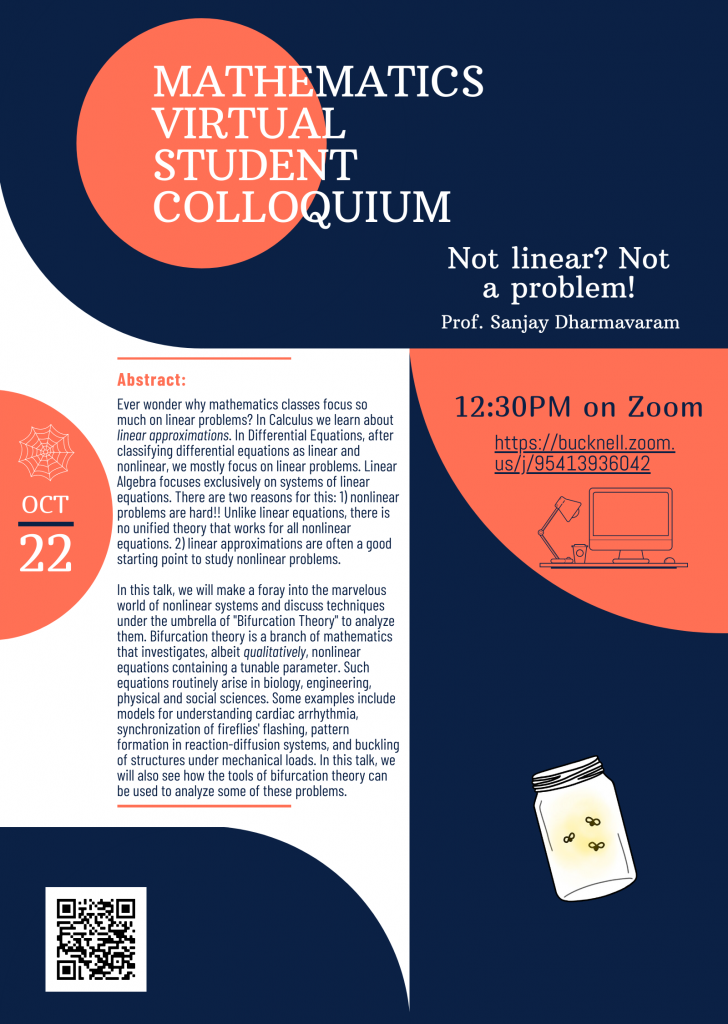https://bucknell.zoom.us/j/95413936042
Student Colloquium Talk by Professor Sanjay Dharmavaram

Abstract: Ever wonder why mathematics classes focus so much on linear problems? In Calculus we learn about linear approximations. In Differential Equations, after classifying differential equations as linear and nonlinear, we mostly focus on linear problems. Linear Algebra focuses exclusively on systems of linear equations. There are two reasons for this: 1) nonlinear problems are hard!! Unlike linear equations, there is no unified theory that works for all nonlinear equations. 2) linear approximations are often a good starting point to study nonlinear problems.
In this talk, we will make a foray into the marvelous world of nonlinear systems and discuss techniques under the umbrella of “Bifurcation Theory” to analyze them. Bifurcation theory is a branch of mathematics that investigates, albeit qualitatively, nonlinear equations containing a tunable parameter. Such equations routinely arise in biology, engineering, physical and social sciences. Some examples include models for understanding cardiac arrhythmia, synchronization of fireflies’ flashing, pattern formation in reaction-diffusion systems, and buckling of structures under mechanical loads. In this talk, we will also see how the tools of bifurcation theory can be used to analyze some of these problems.
Watch on Mediaspace: https://mediaspace.bucknell.edu/media/1_gzca3xpq